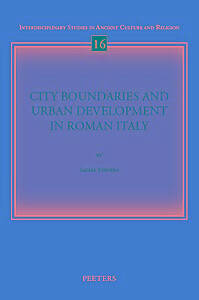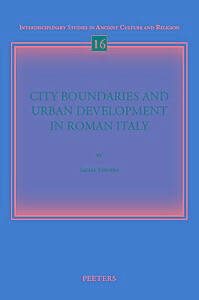
- Afhalen na 1 uur in een winkel met voorraad
- Gratis thuislevering in België vanaf € 30
- Ruim aanbod met 7 miljoen producten
- Afhalen na 1 uur in een winkel met voorraad
- Gratis thuislevering in België vanaf € 30
- Ruim aanbod met 7 miljoen producten
Zoeken
Omschrijving
In Roman cities, boundaries were an important way of defining spaces. The significance of such boundaries was mediated by specific cultural rules. Besides physical boundaries, such as city walls and gates, also immaterial ones, such as the pomerium, demarcated an urban context. Certain civic boundaries were highly visible and relevant to everyone, while others were important to only a small number of people. This book takes a new approach to Roman urban boundaries and city planning by exploring the dynamics and interaction between urban development processes, city limits and the law. As a result, Roman attitudes towards the symbolic meanings of civic boundaries can be better understood. Not only landownership influenced and determined the use of urban space and its boundaries; also conflicts and constant negotiations between law, culture and tradition, politics, and the dynamics of everyday urban life were important for the way the Romans approached urban limits.
Specificaties
Betrokkenen
- Auteur(s):
- Uitgeverij:
Inhoud
- Aantal bladzijden:
- 335
- Taal:
- Engels
- Reeks:
- Reeksnummer:
- nr. 16
Eigenschappen
- Productcode (EAN):
- 9789042933057
- Verschijningsdatum:
- 30/05/2017
- Uitvoering:
- Paperback
- Formaat:
- Trade paperback (VS)
- Afmetingen:
- 160 mm x 239 mm
- Gewicht:
- 539 g

Alleen bij Standaard Boekhandel
+ 158 punten op je klantenkaart van Standaard Boekhandel
Beoordelingen
We publiceren alleen reviews die voldoen aan de voorwaarden voor reviews. Bekijk onze voorwaarden voor reviews.











